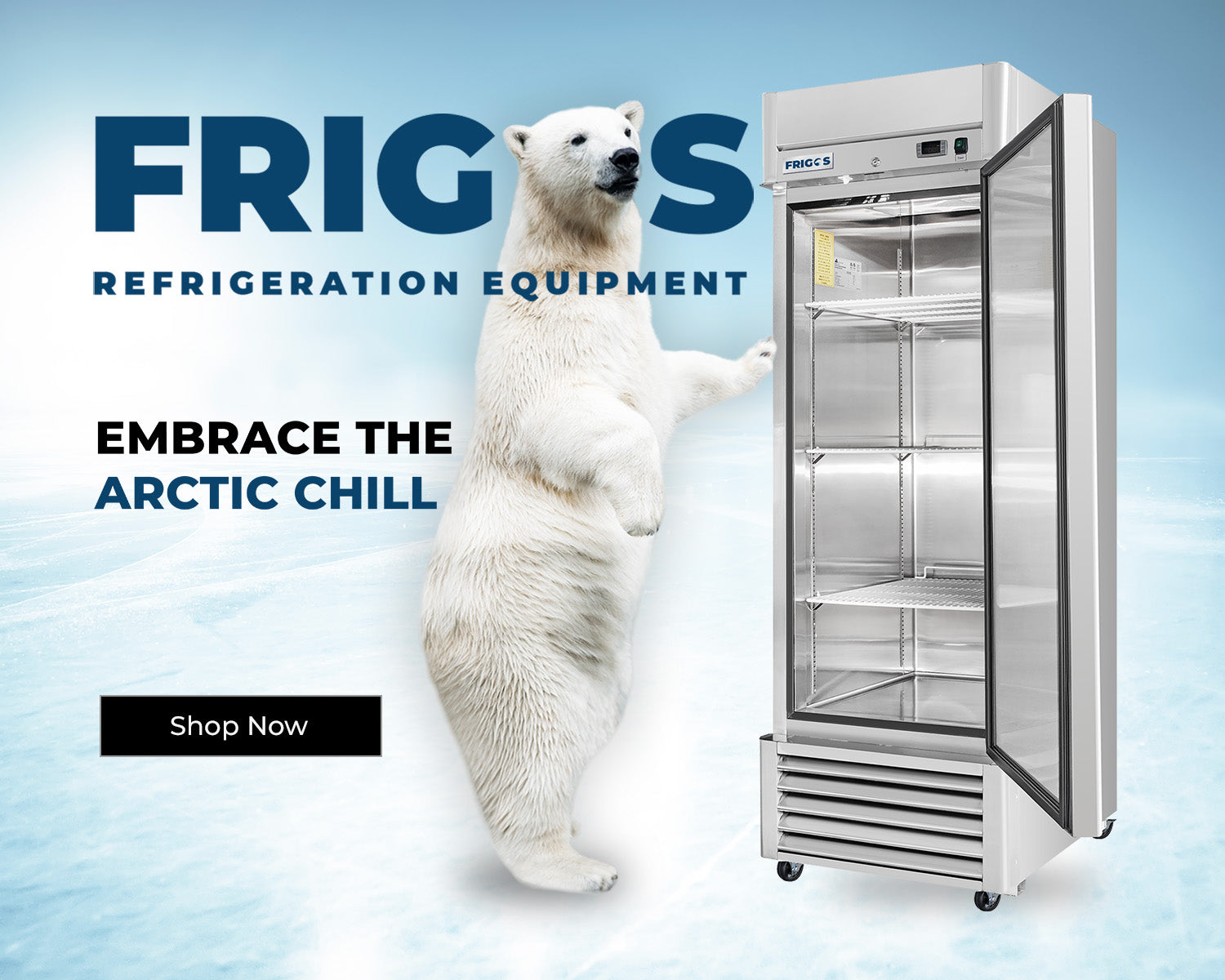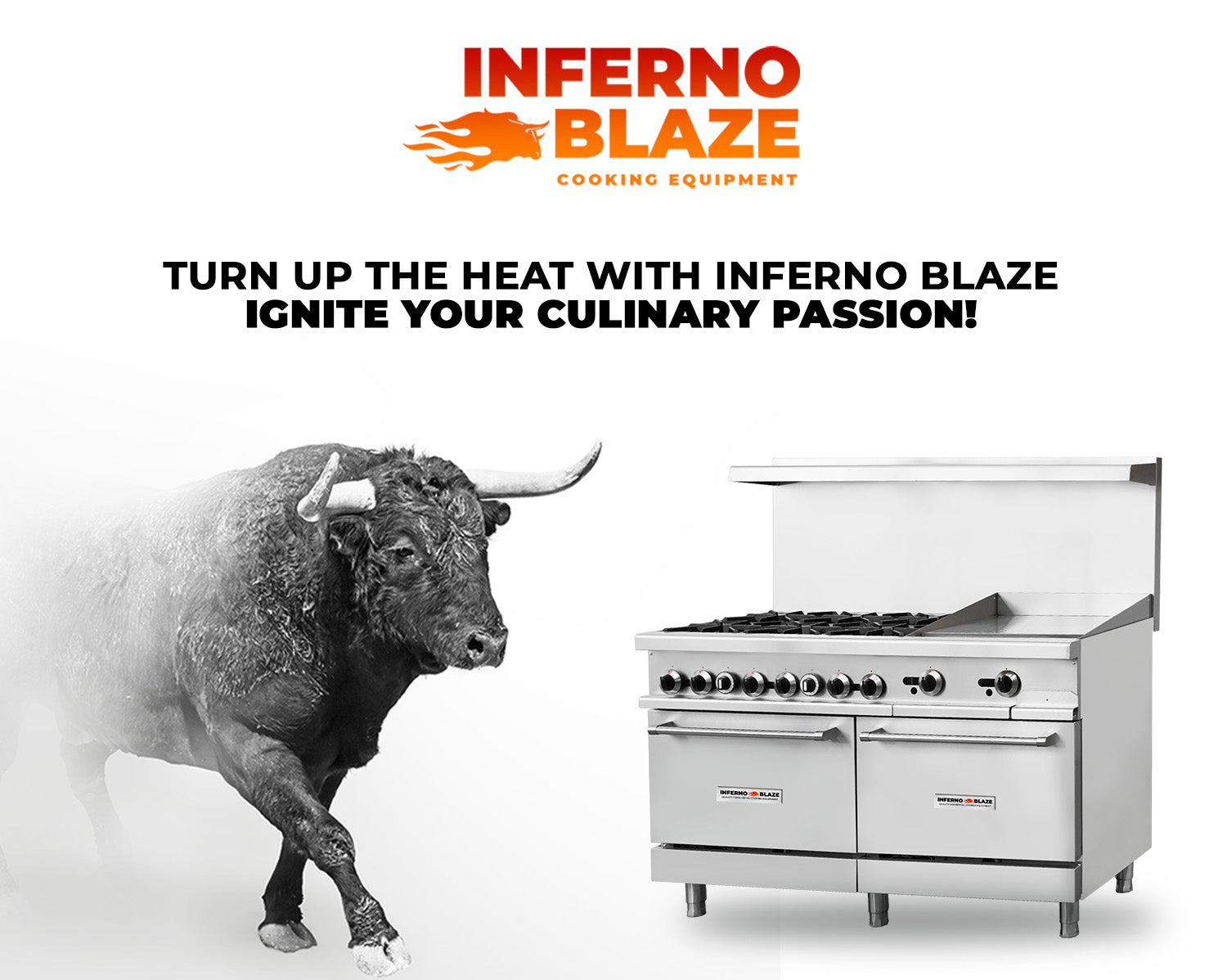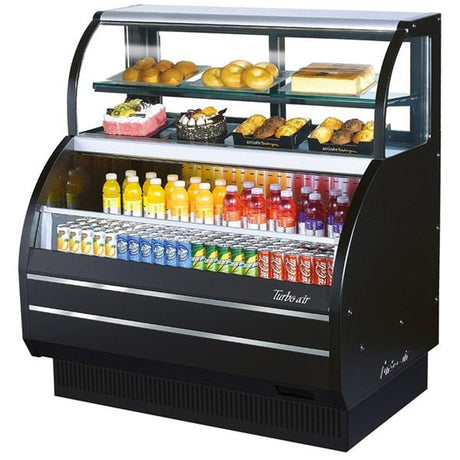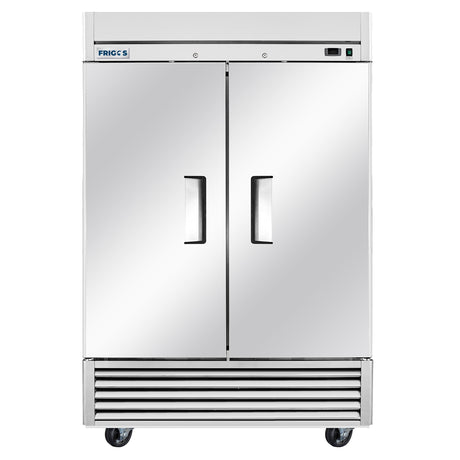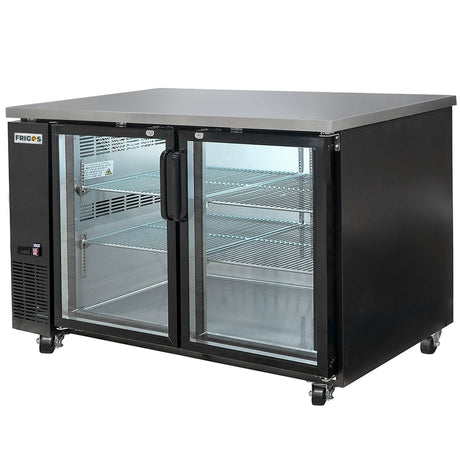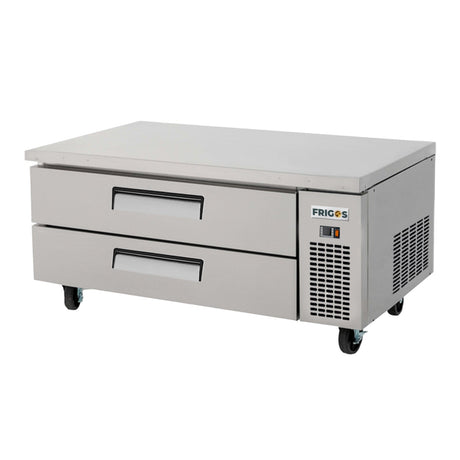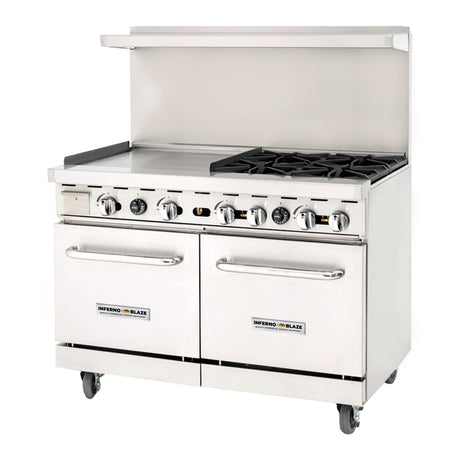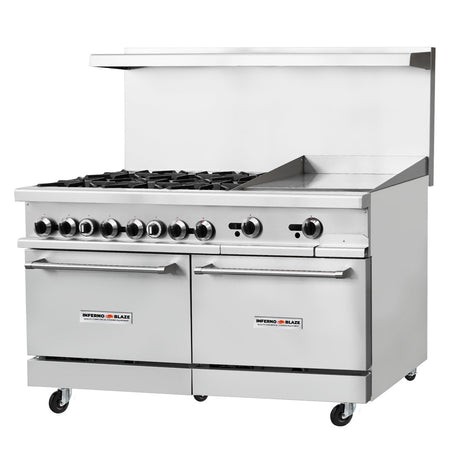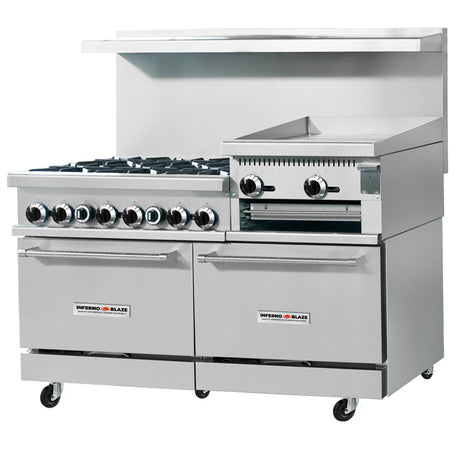Deck ovens, conveyor belts, wood-fired domes—the options for a commercial pizza oven can feel endless, and the technical jargon doesn't make it any easier. It’s a major investment, and the pressure to get it right is real. We're here to cut through the noise. Making the right choice doesn't have to be a guessing game. By breaking down the decision into manageable steps, you can confidently select a machine that fits your space, your budget, and your brand. We'll explore the four main types of ovens, highlight the features that truly matter, and provide a clear framework for choosing the perfect pizza oven for your business, so you can focus on what you do best: making incredible pizza.
Key Takeaways
- Match the oven to your business model: Choose an oven based on your specific goals—whether you need high-volume output for a delivery service or the authentic char of a wood-fired oven for an artisan pizzeria.
- Plan for the total cost of ownership: Your budget needs to account for more than just the oven itself; factor in essential expenses like installation, ventilation, and accessories to avoid unexpected costs.
- Prioritize routine maintenance from day one: Protect your investment and prevent service interruptions by establishing a daily cleaning routine for your staff and scheduling regular professional inspections.
What Are the Different Types of Commercial Pizza Ovens?
Choosing the right pizza oven is one of the most important decisions you'll make for your restaurant. The type of oven you select influences everything from your pizza’s flavor and texture to your kitchen’s workflow and output capacity. It’s a core piece of your cooking equipment that defines your final product.
There isn’t a single “best” oven—the right choice depends entirely on your business goals. Are you aiming for authentic, artisan pies with a perfectly blistered crust? Or do you need to produce hundreds of consistent pizzas an hour for a busy delivery service? Each oven type offers a unique set of strengths. Let's walk through the four main categories to help you find the perfect fit for your kitchen.
Deck Ovens
Deck ovens are the classic choice for many traditional pizzerias. These ovens use stone or ceramic shelves—the "decks"—that are heated from below. Pizzas are placed directly on this hot surface, which results in a crisp, evenly cooked crust that’s hard to replicate with other methods. Because the stone retains heat so well, deck ovens provide consistent cooking temperatures even when you’re opening and closing the door frequently.
Operating a deck oven requires a bit of skill, as your staff will need to know when to rotate the pizzas for a perfect bake. But for restaurants that want to serve authentic, artisan-style pizza, the results are well worth the effort. They are ideal for creating that signature crispy-yet-chewy crust that pizza lovers crave.
Conveyor Ovens
If speed and consistency are your top priorities, a conveyor oven is your best friend. In these units, pizzas are placed on a conveyor belt that moves them through a heated chamber at a set speed. This hands-off approach eliminates guesswork and ensures every single pizza comes out exactly the same. It’s a fantastic solution for high-volume operations like pizza chains, cafeterias, or any business that needs to serve a lot of customers quickly.
Don't let the automated process fool you; modern conveyor ovens can produce excellent, high-quality pizza. They are designed for efficiency, allowing your team to focus on other tasks, like preparing ingredients at the pizza prep tables, instead of monitoring the oven.
Wood-Fired Ovens
A wood-fired oven is more than just a piece of cooking equipment; it’s a statement piece. Often featuring a beautiful brick or clay dome, these ovens can become the centerpiece of your restaurant, creating a warm and inviting atmosphere. They cook pizzas at extremely high temperatures, often in just a couple of minutes, resulting in a puffy, blistered crust and a distinct smoky flavor that can only come from burning wood.
While they require a skilled operator to manage the fire and maintain the right temperature, the unique flavor and rapid cooking times are a major draw for customers. Many modern versions also offer gas-assist features to provide more consistent heat, giving you the best of both worlds.
Countertop Pizza Ovens
Don’t have the space for a massive oven? A countertop pizza oven is the perfect solution. These compact units are designed for businesses with limited kitchen space, such as cafes, bars, food trucks, or concession stands. While they can’t handle the volume of a full-size deck or conveyor oven, they are perfect for adding personal-sized pizzas or flatbreads to your menu.
Countertop ovens are also a great, low-cost way to test out a pizza menu before committing to a larger, more expensive piece of equipment. They are easy to use, efficient, and can help you expand your offerings without requiring a complete kitchen overhaul.
What Features Matter Most in a Pizza Oven?
Once you have a handle on the main types of ovens, it's time to get into the details. The right features can make the difference between a pizza that delights customers and one that falls flat. Think of your oven as the heart of your pizza operation—it needs to be reliable, consistent, and powerful. Focusing on these key features will help you choose a piece of cooking equipment that works as hard as you do and supports your business goals for years to come.
Temperature Control and Heat Distribution
Consistent temperature is everything when it comes to pizza. You need an oven that can reach high heat and, more importantly, maintain it evenly. Poor heat distribution leads to pizzas that are burnt in one spot and undercooked in another—a recipe for unhappy customers. Great temperature control ensures every pizza has a perfectly crispy crust, bubbly cheese, and evenly cooked toppings. Look for ovens with quality insulation and reliable thermostats. The ability to precisely manage the heat gives your kitchen team the control they need to produce a consistently delicious product, even during the busiest dinner rush.
Cooking Speed and Capacity
How many pizzas do you need to make during your peak hours? Your answer will guide you toward the right oven. Cooking speed and capacity are all about matching the oven’s output to your business volume. A high-traffic pizzeria will need a conveyor or large deck oven that can handle a constant flow of orders. A smaller café or bar that serves pizza as a secondary menu item might do just fine with a compact countertop model. Consider not just your current needs but also your future growth. Investing in an oven that can handle your projected volume will save you from having to upgrade sooner than planned.
Energy Efficiency
A pizza oven is a major utility consumer, and those energy bills can add up quickly. Choosing an energy-efficient model is a smart financial decision that pays off over the life of the equipment. Modern ovens are designed with better insulation, more efficient burners, and smarter controls that reduce gas or electricity consumption without sacrificing performance. While an energy-efficient oven might have a higher initial price tag, the monthly savings on your utility bills can provide a significant return on your investment. It’s a feature that’s good for your budget and better for the environment.
Durability and Build Quality
Your commercial pizza oven will be running for long hours under demanding conditions, so it needs to be built to last. Look for sturdy construction, high-quality materials like stainless steel, and components from reputable manufacturers. The build quality affects not only the oven's lifespan but also its performance and ease of maintenance. A well-built oven will hold its temperature more effectively and stand up to the inevitable bumps and scrapes of a busy kitchen. Investing in durability from the start means less downtime, fewer repair calls, and a more reliable cornerstone for your pizza-making process.
Safety and Ventilation Systems
A safe kitchen environment is non-negotiable. Proper ventilation is a critical safety feature for any commercial pizza oven, as it removes excess heat, smoke, and grease-filled air. This protects your staff from uncomfortable or hazardous conditions and reduces the risk of fire. Your oven must be installed with a ventilation system that meets local health and fire codes. Reputable manufacturers design their ovens with safety in mind, but it's essential to work with qualified professionals during installation to ensure your entire setup, including the commercial kitchen ventilation, is compliant and safe.
How to Choose the Right Pizza Oven for Your Business
Selecting the perfect pizza oven is one of the most important decisions you'll make for your restaurant. The right piece of equipment can define your pizza's quality, set your production pace, and ultimately shape your customers' experience. But with so many options available, finding the one that fits your unique needs can feel overwhelming. The key is to think beyond the oven itself and consider how it will function within your specific business model.
Before you start comparing models, take a step back and look at the big picture. Your decision should be guided by practical factors like your expected sales volume, the physical layout of your kitchen, the type of pizza you want to be known for, and your budget. An oven that works wonders for a high-volume takeaway shop might be completely wrong for an intimate artisan pizzeria. By carefully considering your operational needs first, you can confidently choose an oven that will serve as the reliable heart of your kitchen for years to come.
Assess Your Pizza Volume and Kitchen Space
The first step is to get realistic about your numbers. How many pizzas do you plan to sell on your busiest night? Your answer will determine the size and capacity you need. An oven that’s too small will create bottlenecks and frustrated customers, while one that’s too large is an inefficient use of capital and energy.
Next, grab a tape measure. Your kitchen's physical constraints are non-negotiable. You need to account for the oven's footprint plus the necessary clearance for ventilation and safety. Remember to also consider how the oven will fit into your kitchen's workflow. As you plan, keep in mind that your pizza type and fuel source are also critical factors that will influence your final decision.
High-Volume Operations vs. Artisan Shops
The ideal oven for a bustling slice shop is very different from what a craft pizzeria needs. If your goal is to serve hundreds of customers quickly, you need an oven built for speed and consistency. For busy restaurants that need to cook many pizzas fast, conveyor or large deck ovens are excellent choices because they deliver reliable results with minimal supervision.
On the other hand, if you’re an artisan shop focused on creating a unique, perfectly charred Neapolitan-style pizza, a wood-fired or brick deck oven is probably a better fit. These ovens require more skill to operate but offer unparalleled flavor and the authentic, rustic aesthetic that many customers love. Your choice should align with your brand and the signature product you want to create.
Ovens for Small Cafes and Food Trucks
You don't need a massive kitchen to add pizza to your menu. For businesses with limited square footage, like cafes, bars, or food trucks, compact ovens are the perfect solution. Space-saving countertop models can produce delicious, high-quality pizzas without demanding a huge footprint or complex ventilation system.
These smaller units are ideal for establishments where pizza is a popular menu addition rather than the main event. They offer a lower upfront investment and the flexibility to test out a pizza program before committing to larger cooking equipment. Ventless models are another fantastic option for tight spaces, as they eliminate the need for expensive hoods, making them a practical choice for many small-scale operations.
Evaluate Your Workflow and Staffing
Your pizza oven is a core part of your kitchen's ecosystem, and it needs to work in harmony with your team. Think about your current and future staff. Does your team have the expertise to manage a traditional wood-fired oven, or would a simpler gas deck or conveyor oven be a better fit? The complexity of the oven will directly impact the training required.
Also, consider the daily routine. An oven that is difficult to clean can slow down your closing process and add to labor costs. A smart maintenance routine is essential for any piece of equipment, so choose an oven with accessible components that are easy to maintain. Factoring in ease of use and cleaning from the start will ensure a smoother workflow and protect your investment over time.
Preparing for Your Pizza Oven Installation
Once you’ve picked the perfect pizza oven, the next step is getting it installed and ready for action. This phase is just as critical as your initial selection, because how you set up your oven directly impacts its performance and longevity. A well-planned installation ensures your oven operates safely, efficiently, and fits seamlessly into your kitchen’s workflow. Rushing this process can lead to frustrating setbacks, safety hazards, code violations, or an expensive piece of cooking equipment that just doesn’t cook the way it should.
Before your new oven arrives, take the time to prepare your space. This involves more than just clearing a spot; you’ll need to think about power sources, ventilation, and how your team will move around the new unit. Getting these details right from the start saves you from costly modifications later and helps you build a more productive kitchen environment. Think of it as setting the stage for success. A smooth installation means you can start turning out delicious pizzas faster and with fewer complications. A little foresight here goes a long way in preventing headaches down the road. Let’s walk through the key steps to ensure your installation is a success from day one.
Space and Clearance Requirements
First things first: measure your space. Then measure it again. It’s crucial to ensure your new oven will physically fit where you plan to put it. But it’s not just about the oven’s footprint. You also need to account for clearance—the empty space required around the unit. Manufacturers specify these clearances for good reason: they ensure proper airflow, prevent overheating, and provide safe access for cleaning and maintenance. Squeezing a large piece of restaurant equipment into a tight spot can create serious fire hazards and make your kitchen less efficient. Always check the spec sheet and plan accordingly.
Power and Utility Connections
Your pizza oven is a powerful piece of equipment, and it needs the right fuel to run. Before installation, confirm that your kitchen’s utility connections match the oven’s requirements. Whether it runs on gas or electricity, you’ll need to verify that your hookups can handle the load. For a gas oven, is your gas line the right size and pressure? For an electric model, do you have the correct voltage and amperage available? It’s always a smart move to consult with a licensed electrician or plumber to inspect your setup. They can ensure everything is up to code and prevent any last-minute surprises that could delay your opening.
Ventilation and Exhaust Systems
Proper ventilation is non-negotiable in a commercial kitchen, especially when you’re dealing with the high heat and potential smoke from a pizza oven. A quality ventilation system and exhaust hood are essential for safety and comfort. They work to pull smoke, excess heat, and grease-filled vapors out of the air, maintaining a safe and breathable environment for your staff. Neglecting this can lead to poor air quality, fire risks, and health code violations. Be sure to check your local regulations for specific ventilation requirements and invest in a system that’s powerful enough for your oven and kitchen size.
Common Installation Mistakes to Avoid
A successful installation often comes down to avoiding a few common pitfalls. The biggest mistake is overlooking the details we’ve just covered: ignoring clearance requirements, mismatching utility connections, and underestimating ventilation needs. Another frequent error is failing to ensure the oven is perfectly level, which can lead to unevenly cooked pizzas. Finally, don’t forget about your team. Once the oven is installed, take the time to train your staff on proper operation. Simple things, like not opening the door too frequently, can make a huge difference in maintaining consistent temperatures and producing a perfect final product.
How to Budget for Your Commercial Pizza Oven
A commercial pizza oven is one of the most important investments you'll make for your kitchen, and planning your budget goes beyond the initial price tag. The cost of a pizza oven can range from a couple of thousand dollars to tens of thousands, depending on its type, size, and features. To make the right choice, you need to think about your production volume, kitchen space, and long-term goals.
Breaking down your budget into tiers can help simplify the process. Whether you're just starting out with an entry-level model, scaling up with a mid-range workhorse, or investing in a premium oven that defines your brand, there's a solution for every business. It’s also smart to account for additional costs like installation, ventilation, and maintenance from the very beginning. Planning for these expenses ensures your investment pays off for years to come and helps you avoid unexpected downtime when you can least afford it.
Entry-Level Options
If you're just dipping your toes into the pizza world or have limited space, entry-level ovens are a fantastic starting point. These are perfect for food trucks, small cafes, or bars looking to add pizza to the menu without a massive upfront cost. Think compact countertop ovens or smaller deck ovens that can produce quality pizzas on a smaller scale. While they won't handle the rush of a dedicated pizzeria, they offer an affordable way to test your concept and generate revenue. Look for models that are easy to operate and don't require specialized ventilation, which can save you a lot on installation costs.
Mid-Range Commercial Units
For most growing restaurants and pizzerias, mid-range ovens hit the sweet spot between performance and price. This category includes reliable deck ovens and smaller conveyor models designed to handle a consistent daily volume. These units are true workhorses, built with durable materials and offering more precise temperature controls than their entry-level counterparts. You’ll find a variety of gas and electric options, allowing you to choose the best fit for your kitchen's utility setup. Investing in this tier of cooking equipment ensures you have a dependable machine that can keep up with demand as your business grows.
Premium and Specialty Ovens
When pizza is the star of your show, a premium or specialty oven is a worthy investment. This category includes authentic wood-fired ovens, large-scale conveyor ovens for high-volume chains, and hybrid models that offer both gas and wood-fired cooking. These specialty ovens are about more than just capacity; they're about creating a specific type of pizza and often serve as a stunning centerpiece for your restaurant. While the initial cost is higher, these ovens deliver superior heat retention, unique flavor profiles, and a level of craftsmanship that can define your brand and attract discerning customers.
Factoring in Hidden Costs
The sticker price of your oven is just one piece of the financial puzzle. Be sure to account for installation fees, which may require professional electricians or gas fitters. You'll also need a proper ventilation system, like a commercial hood, to meet safety codes. Don't forget about the cost of accessories like pizza peels and cleaning tools. Finally, plan for the future. Regular cleaning and maintenance are essential for keeping your oven running efficiently, so set aside funds for routine service and potential repairs to keep your kitchen operating smoothly.
How to Properly Maintain Your Pizza Oven
Your commercial pizza oven is the heart of your kitchen, and keeping it in top shape is non-negotiable for turning out perfect pies. Proper maintenance isn't just about keeping things clean; it’s about ensuring consistent performance, extending the life of your investment, and maintaining a safe work environment for your team. A well-cared-for oven heats evenly, recovers temperature quickly, and won’t surprise you with unexpected downtime during a dinner rush.
Think of maintenance as a core part of your operations, not an afterthought. By building a simple routine, you can protect your cooking equipment and keep it running efficiently for years. It all comes down to four key practices: establishing a daily cleaning habit, scheduling regular professional check-ups, training your staff on proper use and safety, and knowing which common maintenance mistakes to sidestep. Let’s walk through how to make each one a seamless part of your kitchen’s workflow.
Create a Daily Cleaning Routine
A little cleaning at the end of each day goes a long way in preventing major issues. Letting grease, cheese, and stray toppings build up can affect your oven’s performance and even become a fire hazard. Your daily routine doesn’t have to be complicated. Start by turning off the oven and letting it cool down. Then, use a deck brush to sweep out any burnt food particles and ash from the cooking surface. Wipe down the exterior with a damp cloth and a mild, food-safe cleaner. This simple habit prevents stubborn, baked-on grime and ensures your oven is ready for the next service. A consistent cleaning schedule is the best defense against long-term wear and tear.
Schedule Regular Inspections and Service
While your team can handle daily cleaning, your oven also needs professional attention to keep its internal components working correctly. Plan for monthly and annual inspections with a qualified technician. They can check thermostats for accuracy, inspect gas lines and burners for issues, and ensure all electrical components are in safe working order. These regular check-ups help you catch potential problems before they lead to a costly breakdown. In between professional visits, train your staff to spot warning signs like uneven cooking, strange noises, or a door that doesn’t seal properly. Addressing these small things early can save you a major headache later.
Implement Staff Training and Safety Protocols
A commercial pizza oven is a powerful piece of equipment, and everyone on your team should know how to use it safely. Proper training reduces the risk of accidents and prevents damage caused by improper operation. Your training program should cover everything from the correct start-up and shutdown procedures to managing temperatures and recognizing signs of a malfunction. Establish clear safety protocols for working around extreme heat and moving parts, especially if you have a conveyor oven. When your staff understands how the oven works and respects its power, they become your first line of defense in keeping the equipment—and themselves—safe.
Avoid Common Maintenance Mistakes
Knowing what not to do is just as important as knowing what to do. Some of the most damaging issues arise from simple, avoidable mistakes. A big one is skipping routine cleaning—what seems like a small oversight can quickly lead to performance problems. Another common error is using the wrong cleaning tools, like abrasive scrubbers or harsh chemicals that can damage the oven’s surfaces. Also, be mindful not to overload the oven, as this can strain its components and lead to uneven cooking. Finally, never postpone repairs. That strange noise or faulty thermostat won’t fix itself, and waiting almost always makes the problem worse. By avoiding these common pitfalls, you’ll protect your restaurant equipment and your bottom line.
Related Articles
Frequently Asked Questions
How do I decide between a deck oven and a conveyor oven? The right choice really comes down to your restaurant's identity and volume. If your brand is built on authentic, artisan-style pizza with a perfect crust, a deck oven is your best bet. It requires more skill from your staff but delivers that classic pizzeria quality. If your business model is focused on speed, high volume, and absolute consistency for every order, a conveyor oven is the clear winner. It streamlines your workflow and ensures every pizza comes out the same, even during the busiest rush.
I have a small cafe, not a pizzeria. Can I still serve great pizza? Absolutely! You don't need a massive kitchen to add pizza to your menu. A compact countertop pizza oven is the perfect solution for smaller spaces like cafes, bars, or food trucks. These units are designed to produce delicious, high-quality personal pizzas or flatbreads without requiring a huge investment or a complex ventilation setup. It's a fantastic way to expand your offerings and test a pizza menu before committing to larger equipment.
What are the most important "hidden costs" to budget for? The sticker price of the oven is just the beginning. You should always factor in the cost of professional installation, which might require a licensed electrician or plumber to ensure your utility connections are correct. The biggest additional expense is often the ventilation system, as a proper commercial hood is essential for safety and meeting health codes. Finally, remember to budget for necessary accessories like pizza peels, cleaning brushes, and a fund for routine maintenance to keep your oven in top shape.
Is a special ventilation hood really necessary for my pizza oven? For nearly all commercial pizza ovens, the answer is a definite yes. Proper ventilation isn't just a suggestion; it's a critical requirement for safety and compliance with local fire and health codes. An exhaust hood removes intense heat, smoke, and grease-filled air from your kitchen, creating a safer and more comfortable environment for your staff. Always check your local regulations and work with a professional to ensure your ventilation system is correctly installed and sized for your oven.
What's the single most important thing I can do to keep my new oven running well? The most effective thing you can do is establish a consistent daily cleaning routine. It sounds simple, but making sure your team sweeps out burnt food particles and wipes down the exterior at the end of every day is the best way to prevent performance issues. This simple habit stops grease and grime from building up, which ensures your oven heats evenly and protects its components from long-term damage. It’s the easiest and most effective way to protect your investment.






